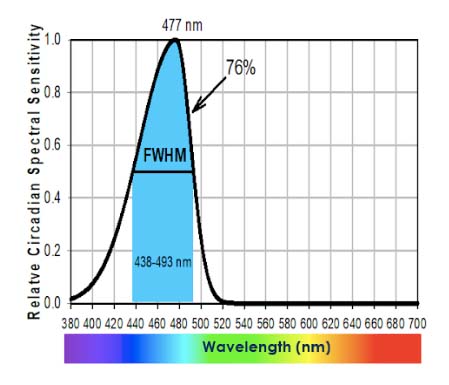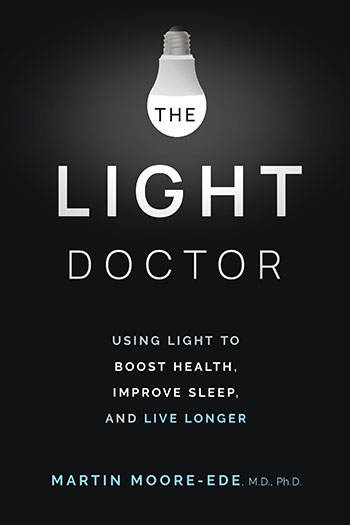Exposure to the Right Blue is Critical for Optimizing Circadian Rhythms
One of the excuses the lighting industry uses to avoid addressing the harmful effects of blue enriched LED lights at night is “circadian science is not yet mature”. Now a publication in PNAS from Harvard’s Brigham and Women’s Hospital, has resolved one of the last remaining contradictions in the science – what color blue is responsible for the health effects?
Over the past 20 years, exposure to blue-rich light at night, and too little blue-rich light during the day, has been linked to dozens of serious health disorders caused by circadian rhythm disruption, including sleep disorders, depression, obesity, diabetes, cardiovascular disease, and several hormone sensitive cancers including breast and prostate cancer.
But which blue? Royal blue, sky blue, aqua?
The first photobiology studies in 2001 pointed to 460 nm royal blue. But they studied people in the dark given short (<90 minute) exposures to monochromatic (single-color) lights.
Subsequently retinal neuroscientists suggested circadian clocks are most sensitive to 490 nm aqua blue. They found the circadian photopigment melanopsin expressed in tissue culture, had a peak sensitivity at 479nm, and added a theoretical correction of +11 nm for color distortion by the lens of the eye. This became the basis for their CIE melanopic lux standard. But 490 aqua blue was never directly verified in light-adapted people.

Circadian Blue Light: the narrow band of blue light (between 438-493nm) that synchronizes our circadian rhythms during the day and disrupts them at night.
Neither of these studies represented how people use lights in the real world. To better understand blue light effects, our team at the Circadian Light Research Center studied people working under normal office lighting. In 2020 we reported the key color in healthy lighting was 477 nm sky blue, near the 479 nm peak sensitivity of the melanopsin circadian photopigment in the eye. The 460 nm royal blue sensitivity only applied to the dark-adapted eye, but in the normal light-adapted conditions of workplaces and homes, the blue light most essential to control was sky blue, near 480 nm, light.
In 2022, the Harvard study confirmed our explanation was correct. During the first hour of light exposure 460nm royal blue is the key circadian clock resetting signal, but after that approximately 480nm sky-blue light is the circadian time cue. They resolved the contradiction by studying 99 dark-adapted human volunteers receiving 6.5 hours monochromatic light exposures instead of the previously studied 90 minutes.
The reason for the difference between short versus long light exposures is that the cones in the retina are triggered when people first see light, but that effect fades away in the first hour, leaving the melanopsin-containing retinal ganglion cells in the retina driving the sustained response to blue light as long as the lights remain on.
To protect human health, the lighting industry needs to remove all 438-493 nm blue light from every LED light used after sunset, but add plenty of ⁓480 nm blue light to every fixture and light bulb used during the daytime hours.
If we don’t replace conventional lights with circadian lighting, we are only prolonging the ill-health caused by the indiscriminate use of blue-enriched lights.
